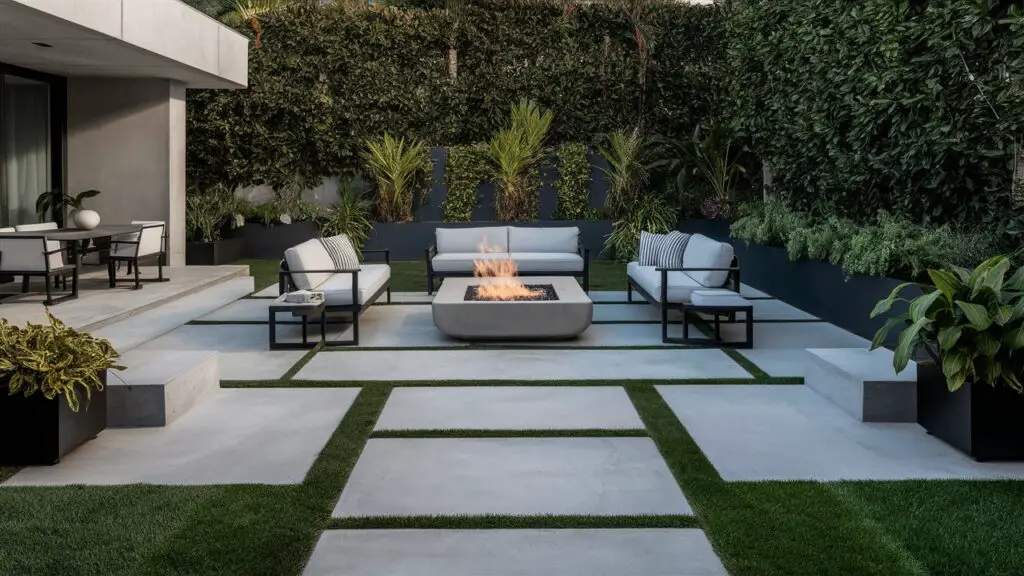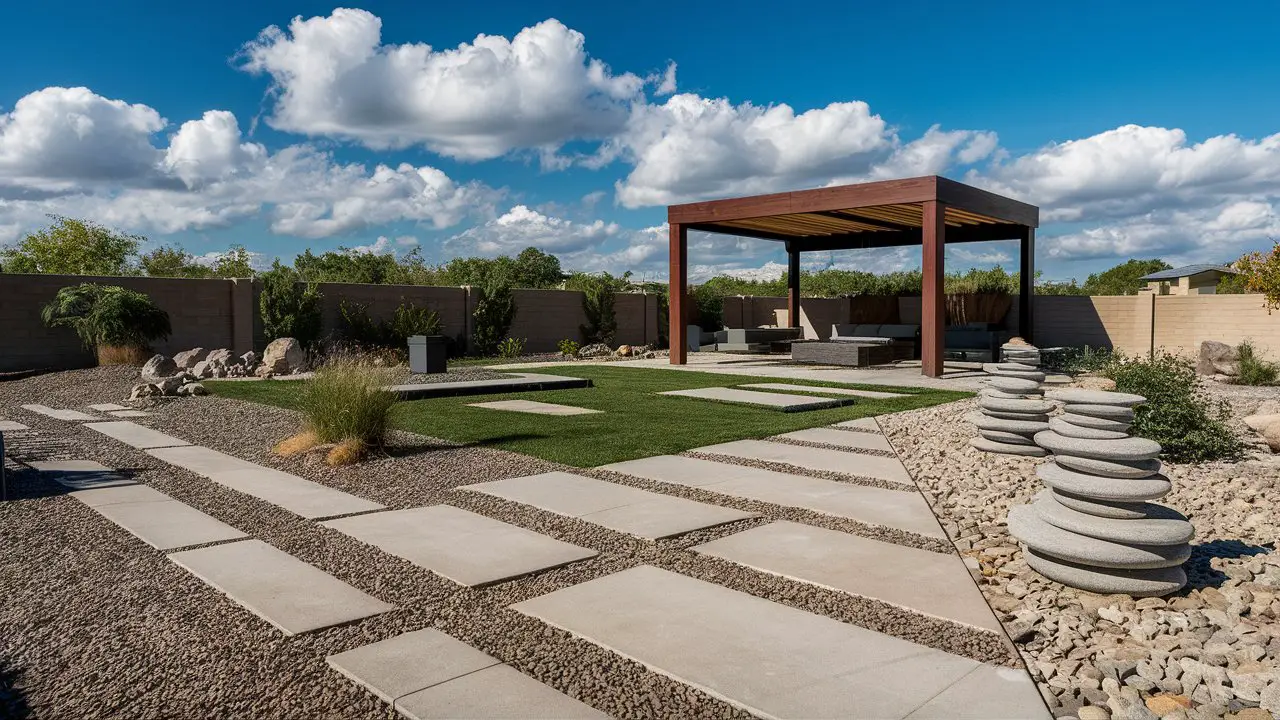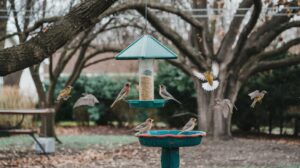As a homeowner, you may be considering alternatives to the traditional grass lawn for your backyard. With concerns over water use, mowing, and environmental sustainability on the rise, no-grass backyards present beautiful, eco-friendly options. In this article, you’ll discover inspiring no-grass designs using native plants, gravel, rock, mulch, and more. We’ll walk through the benefits of reducing or removing grass entirely, from lowering maintenance to creating habitat. You’ll find tips for assessing your yard’s needs, choosing surfaces and plants, and making the transition smoothly. With helpful examples, practical guidance, and stunning photos, you’ll gain the knowledge you need to craft a gorgeous, sustainable no-grass backyard.
The Benefits of Removing Grass From Your Backyard
Reduced Maintenance
Removing grass from your backyard and replacing it with hardscaping, native plants, or artificial turf can significantly reduce the amount of maintenance required. Grass lawns demand frequent mowing, edging, fertilizing, and watering to keep them looking pristine. Hardscaping with pavers, gravel, or stone requires virtually no maintenance. Native plants and artificial turf also minimize maintenance needs once established. For many homeowners, less time spent on yard work means more time enjoying your outdoor space. ###Cost Savings Maintaining a grass lawn can be expensive. The costs of a lawnmower, edger, fertilizer, pesticides, and high water bills add up over the years. Removing grass and replacing it with low-maintenance alternatives can save thousands of dollars annually in reduced costs and labor. Artificial turf, in particular, may have higher upfront costs but can save money in the long run with its durability.
###Environmental Benefits
Traditional grass lawns require significant amounts of water, fertilizer, and fossil fuels to maintain, which strains natural resources and contributes to pollution. Replacing grass with drought-tolerant native plants, permeable hardscaping, or artificial turf helps conserve water, reduce chemical usage, and curb air pollution from gas-powered lawn mowers. Your backyard oasis will be more sustainable and environmentally friendly without a grass lawn.
Improved Aesthetics
For many homeowners, a lush green lawn is considered the ideal. However, removing grass opens up opportunities for more creative and visually interesting yard designs. You can incorporate pathways, patios, decks, gardens, water features or any number of eye-catching hardscaping and planting options for an attractive, personalized outdoor space you’ll enjoy for years to come. A yard without grass can become a peaceful retreat and natural extension of your home.
Creative No-Grass Backyard Options
Many homeowners are choosing to forgo the traditional grass lawn in favor of more sustainable no-grass options. These creative alternatives can provide an attractive, low-maintenance backyard landscape.
Gravel or Stone Gardens
Using gravel, rocks, or stones in place of grass is an easy no-grass option. You can create pathways, patios, or fill the entire yard with gravel. Stone gardens give you the opportunity to arrange rocks in an artistic, Zen-like manner. Gravel and stones also allow for drainage and are drought-resistant.
Ground Cover Plants
Low-growing, spreading plants like clover, thyme, sedum, or chamomile can replace grass. Once established, they require little maintenance. They stay low to the ground, so they reduce the need for mowing and create an attractive ground cover. Ground cover plants also attract pollinators like bees and butterflies.
Artificial Turf
Artificial or synthetic turf looks like real grass but requires no mowing, watering or fertilizing. It is durable and long-lasting. However, artificial turf can get very hot in the summer and may not suit every climate. It also does not provide the same environmental benefits as natural plants.
Hardscaping
Using non-plant materials like wood, stone, concrete or brick to create patios, walkways, retaining walls or other structures is known as hardscaping. Hardscaping requires little upkeep once installed and can provide an attractive no-grass option, especially when combined with gravel, stone or plants.
With many creative no-grass alternatives to choose from, you can design an attractive, sustainable backyard that saves time, money and the environment. Your perfect lawn may be no lawn at all!
Grow your own medicine backyard
Watch Video


Top Medicinal Plants for a Grass-Free Backyard
Lavender
Lavender is a popular plant with soft, purple flowers that have a pleasant aroma. The essential oil from lavender flowers has antiseptic and anti-inflammatory properties. You can use lavender essential oil to relieve stress and anxiety, improve sleep, and ease pain from burns, insect bites, and wounds. Lavender plants require full sun and well-drained soil.
Peppermint
Peppermint has a refreshing aroma and flavor. The leaves contain menthol, which provides a cooling sensation and helps relieve discomfort from indigestion, nausea, and irritable bowel syndrome. Peppermint essential oil also has antimicrobial properties and can be used to relieve tension headaches when applied to the skin. Peppermint thrives in partial shade and moist soil.
Echinacea
Echinacea, also known as coneflower, has pink daisy-like flowers and is a popular herbal remedy. The roots and leaves of echinacea contain compounds that help support the immune system. Echinacea supplements or tinctures made from the roots and leaves may help reduce the severity and duration of colds and flu. Echinacea grows well in full sun and tolerates some drought.
Feverfew
Feverfew is an herbaceous plant with small daisy-like flowers. The leaves contain compounds that may help prevent and relieve migraine headaches. Feverfew supplements and extracts can be used as a preventive treatment for migraines and also to reduce headache pain. Feverfew prefers full sun and moderate watering.
Valerian
Valerian has pink or white flowers and a distinctive musky aroma. The roots of valerian contain valerenic acid and other compounds that act as mild sedatives. Valerian extracts, tinctures, and supplements can be used to relieve insomnia, anxiety, and restlessness. Valerian grows best in partial shade and consistently moist soil.
Calendula
Calendula, also known as pot marigold, produces yellow and orange flowers. Calendula flowers contain flavonoids with anti-inflammatory and wound-healing properties. Creams, ointments, and tinctures made from calendula flowers can be used to relieve skin irritation from rashes, minor wounds, burns, and insect bites. Calendula thrives in full sun and well-drained soil.
Designing a Low-Maintenance, Sustainable Landscape Without Grass
When designing a sustainable landscape without a traditional grass lawn, there are several factors to consider for a cohesive and low-maintenance yard. Carefully planning the layout and selecting appropriate plants and materials can result in an attractive space that does not require frequent mowing, watering or application of chemicals.
Selecting Low-Maintenance Plants
Choosing plants that do not require intensive care is key to a sustainable landscape. Native plants that are well-adapted to your climate are excellent options, as they generally do not need excess watering or fertilizer once established. Perennials, shrubs, succulents and ornamental grasses are other good choices. Arrange plants with similar light and water needs together for efficient care.
Hardscaping and Groundcovers
Incorporating non-plant materials into your design reduces overall yard maintenance. Pathways, patios and decks create usable spaces without grass. Permeable pavers and gravel are porous options that allow water to soak into the soil. Groundcovers like clover, chamomile, and creeping thyme produce soft lawn-like areas that do not require mowing.
Mulch and Compost
Applying a layer of mulch or compost around plants and in open areas of soil helps retain moisture, prevents weeds and slowly releases nutrients to the soil as it decomposes. Organic mulches like shredded bark, pine needles and leaves will enrich the soil as they break down. Inorganic mulches such as gravel or stones also suppress weeds but do not provide the same benefits to the soil.
Irrigation
For the most sustainable landscape, choose plants and materials that can thrive with natural rainfall in your area. If supplemental water is needed, install an efficient drip or micro irrigation system and group plants with similar water needs on the same hydrozone. This reduces excess water usage by allowing you to customize watering schedules for different areas of the yard. With well-planned design and plant selection, you can enjoy an attractive, eco-friendly landscape without a traditional grass lawn.

FAQs: Answering Common Questions About No-Grass Backyards
What are some good options for a no-grass backyard?
Some excellent alternatives to a traditional grass lawn include gravel or stone yards, native plant gardens, vegetable or herb gardens, ground cover plants, mulch yards, artificial grass, and permeable hardscaping like interlocking pavers. These options are low-maintenance, environmentally friendly, and can provide sensory interest.
How do I get started with a no-grass backyard?
The first step is to determine your needs and priorities for your yard space. Do you want a space for entertaining, a vegetable garden, a children’s play area or something else? Next, have your soil tested to determine if any amendments need to be made. Then, you can choose materials and plants based on your climate and design a layout for your new yard. It is best to start small and expand over time as you gain experience.
What are the benefits of removing my grass lawn?
There are many benefits to replacing a traditional grass lawn. Grass lawns require frequent mowing, watering, and fertilizing which takes time, money, and resources. They also provide little environmental benefit. Alternative yards can increase biodiversity, reduce pollution, lower your water bill, decrease maintenance, and create a more sustainable and eco-friendly outdoor space.
Will my property value decrease without a grass lawn?
While grass lawns were once thought to positively impact property values, that is changing. According to studies, alternative yards do not lower property values, and in some cases, the unique landscaping can increase the value. The key is to create an aesthetically pleasing, well-designed space. An unmaintained, weedy yard could negatively impact value, so choose options that work with your local climate and property.
How much will it cost to convert my yard?
The cost to convert your yard depends on the size of your lot and the materials and plants you choose. Gravel, mulch, and ground cover plants tend to be affordable, while hardscaping, artificial grass, and stone work can be more expensive. However, in the long run, alternative yards typically save money compared to the annual costs of maintaining a grass lawn. Get multiple estimates from landscapers in your area to determine a budget for your no-grass backyard project.
Conclusion
Ultimately, the choice comes down to you and what makes the most sense for your lifestyle, climate, and budget. But the possibilities for a gorgeous, eco-friendly backyard free of high-maintenance grass are plentiful. With a little creativity, research, and planning, you can create an outdoor oasis that not only looks amazing, but also saves you time, money, and water. So don’t be afraid to think outside the grass box. A lush, vibrant landscape is still possible without a blade of grass in sight.





